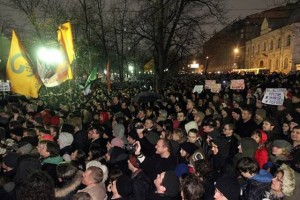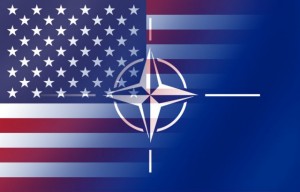The following is a brief listing of some of the threats facing the world in 2015, as arranged by category. Innovative ideas took precedence over conventional ones, and the list is not meant to be read as identifying the most likely per say, but rather those that may have escaped the attention of mainstream analysts.
Security/Defense
Asian Insurgencies:
Important non-Arab Asian states are on the cusp of experiencing what may turn into full-scale insurgencies, and 2015 may be the year that many of them simultaneously spill over. Here’s a quick glance:
Afghanistan/Pakistan: transnational Taliban problem (could also enter Central Asia)
India: Assam (specifically Bodo nationalists, may spill over to other ethnic groups like the Nagas)
China: Xinjiang (possibility for coordinated Tibetan destabilization campaign)
Myanmar: resumption of civil warfare
Semi-coordinated or outside-influenced destabilization in the India/Myanmar/Bangladesh nexus, possibly of Christian/Hindus vs. Muslims could precede a major regional crisis designed to neutralize India’s Highway to ASEAN and the BCIM Trade Corridor.
To Watch:
Iran/Balochistan: transnational Baloch nationalism
Thailand: Muslim separatists in the south
Philippines: Resumption of separatist/Islamic terrorism in the south
Finance/Economy
Transitional Trends vs. Conservative Counter-Moves:
BRICS are making major moves to restructure the international economic order (including the creation of alternative/counter institutions), but this will most definitely be met with opposition from the West,  which needs to retain the old system in order to prolong its influence. Look for moves to disrupt the Eurasian Economic Union and China’s Land and Maritime Silk Road projects, as well as deepening instability in Nicaragua to sabotage the China’s Transoceanic Canal construction there.
which needs to retain the old system in order to prolong its influence. Look for moves to disrupt the Eurasian Economic Union and China’s Land and Maritime Silk Road projects, as well as deepening instability in Nicaragua to sabotage the China’s Transoceanic Canal construction there.
To Watch:
The fracking extravaganza in the US may be set to crash and burn, especially in light of recent slump in energy prices. Much of the $1.3 trillion invested in this field may vanish into thin air, thus threatening to overshadow even 2008’s subprime mortgage crisis.
Social/’Human Rights’
Hybrid Wars:
Be on the lookout for the US’ Hybrid Wars (Color Revolutions mixed with Unconventional Warfare [e.g. the ‘Arab Spring’ events and Ukraine]) to feature big next year. Even if there is no social disruption that takes place, it can be all but guaranteed that the social infrastructure for a few of them will be  constructed during this time. Hybrid Wars are the new form of US-sponsored warfare in geostrategic areas, and having learned important lessons from the successes and failures experienced during the ‘Arab Spring’ events and Ukraine, this weapon is being honed to be as lethal as possible.
constructed during this time. Hybrid Wars are the new form of US-sponsored warfare in geostrategic areas, and having learned important lessons from the successes and failures experienced during the ‘Arab Spring’ events and Ukraine, this weapon is being honed to be as lethal as possible.
To Watch:
Water rivalries in North/East Africa (Nile River) and Central Asia (Amu and Syr Darya Rivers) have the potential of growing into Water Wars. At the very least, tension between all neighboring countries will be increased next year, as this is an issue that most certainly will not go away. It’s a ticking time bomb not of ‘if’, but of ‘when’ it blows up.
US/NATO
Cohesiveness:
The main struggle facing the organization is not ‘Russia’ or ‘anti-missile defense’, but staying cohesive enough to make joint decisions and take resolute action. The recent divide between the alliance over how to approach relations with Russia has demonstrated two major divides between the group, that of East vs. West and the Newer vs. Older members, with the first category of each currently winning out against  the ‘Western old timers’. In terms of its out-of-region power expression, there is no set plan for how NATO plans on intervening in the Mideast, as even member-state Turkey isn’t fully on board with the US’ vision there.
the ‘Western old timers’. In terms of its out-of-region power expression, there is no set plan for how NATO plans on intervening in the Mideast, as even member-state Turkey isn’t fully on board with the US’ vision there.
To Watch:
One of the military-related themes of 2014 was that ‘Shadow NATO’ was creeping all throughout the Western fringes of the former Soviet Union, mostly in Ukraine. The idea is to de-facto integrate Ukraine, Moldova, and Georgia into the alliance without a formal vote, hence why the US has been grouping all three countries together whenever it passes anti-Russian legislation. The stealthy expansion of NATO right to Russia’s Western and Southern doorsteps will definitely be met with some kind of asymmetrical response and will only serve to heighten tensions even more.
Russia
Leading The R&D World:
Russia’s primary mission in the coming years is to lead the Resistant & Defiant (R&D) world as it turns the multipolar theory into a working global reality. The US will be doing whatever it can to obstruct and reverse these processes, hence why Russia and its R&D allies must be even more alert to its treachery, including the subversive use of Hybrid Warfare. This challenge isn’t only Russia’s, and would be more accurate to term as the Global Challenge of the 21st century.
To Watch:
The incorporation of Armenia into the Eurasian Union on 2 January brings with it a unique geoeconomic challenge for Russia, since the vast majority of bilateral trade traverses Georgia, which is going in the opposite direction by trying to join the EU. Sooner or later, Georgia will move closer to the bloc and have to enact a customs barrier on its borders, which will obviously infringe upon Russian-Armenian trade within the framework of the Eurasian Union. Since it’s politically impossible for bilateral trade to go through Azerbaijan, the only economically viable alternative is to connect Armenia to the Caspian and Arabian Seas via an Iranian-built (and possibly Chinese-financed) railroad and link it to the North-South Corridor facilitating Russian-Indian trade. Still, this isn’t a long-term solution and will take on additional costs, so something must eventually be done to resolve the forthcoming EU-Eurasian Union crisis in the Caucasus.














2015 could very well be the year that could go down in History as the year that Manking saw the beginning of it’s Thirld World War.Why?if these two last years taught me anything is that the worst of previous year turn out to be actually,the best of the following one.Case in Point?if asked to an analyst on December 2013 what to expect it will happen one year from now,he wouldn’t predict the scope of events that took place in 2014.Everyone involved was surprised by the fast pace and turn arounds that events took. As such,if you ask to any analyst what to expect from 2015,no one will dare to got that far and yet..well,will see
Pingback: Major threats in 2015 - ZoneAsia-PkZoneAsia-Pk
Pingback: The Hoagland-Blinken Doctrine Is Washington’s Updated Plan For Central Asia (II) |